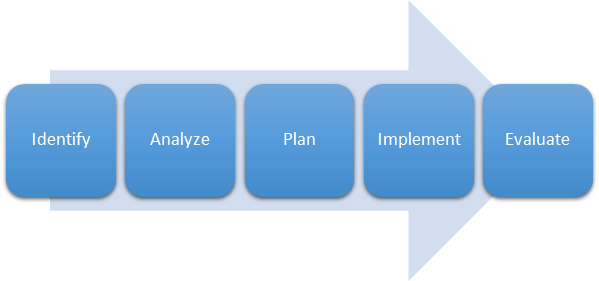 Strahinja Stojanovic
Strahinja Stojanovic
October 11, 2017
Continual improvement is a crucial part of any Quality Management System (QMS), and IATF 16949 brings it to the next level by requiring problem-solving and error-proofing processes as a part of the requirements for continual improvement. Error-proofing represents a structured approach to ensuring the quality of products throughout the entire manufacturing process. It provides organizations with a tool to improve the manufacturing or business processes to prevent specific errors – and, thus, defects – from occurring. Error-proofing methods enable organizations to discover sources of errors through fact-based problem solving. The focus of error-proofing is not on identifying and counting defects; rather, it is on the elimination of their cause: one or more errors that occur somewhere in the production process.
Errors are inadvertent, unintentional, accidental mistakes made by people because of the human sensitivity designed into our products, which result in those “once in a while” defects that we always find difficult to control. Inadvertent errors are not only possible, but inevitable, and they happen regularly.
Have you ever locked the keys inside your car, or run out of gas, or forgotten to turn off the coffee pot? Mistakes, or errors, are part of our everyday lives. It is hard to avoid them, and even harder to explain why they happened. If you are required to write your name 1500 times, are you 100% sure that you won’t make any mistakes?
And, of course, these examples are related to the production process mainly, but you probably can think of something related to your area of work. Depending on the type of error, the stakes can be high. Work-related errors can lead to work-related injuries, loss of money, wasted time, loss of jobs or deals, and even injury or death of consumers, so it is no wonder that this is an important part of a standard that focuses on quality in the automotive industry.
Requirements for error-proofing processes are part of the continual improvement requirements, and an entire sub clause (10.2.4) is dedicated to them. The standard requires an organization to establish a documented process to determine the use of appropriate error-proofing methodology. However, the methodology for error-proofing should be documented in the process risk analysis, such as PFMEA (Process Failure Mode Effect Analysis), and the test frequency should be documented in the control plan (to learn more about the control plan, see: How to Develop a Control Plan According to IATF 16949).
The process must include testing of the error-proofing devices for failure or simulated failure, and the error-proofing device failures should have a reaction plan. And finally, of course, records of this process should be maintained.
Error-proofing is the activity of awareness, detection, and prevention of errors that could adversely affect our customers (defects) and our people (injuries), and result in WASTE!
Awareness: Having the forethought that a mistake can be made, communicating the potential, and planning the design of the product or process to detect or prevent it.
Detection: Allowing the mistake to happen, but providing some means of detecting it and alerting someone so that we fix it before sending it to our customer.
Prevention: Not allowing the possibility for the mistake to occur in the first place.
There are two main techniques for error-proofing:
Regardless of the technique you decide to apply (and you will probably decide to apply them both), the error -proofing process has some common steps that ensure success:

For your organization to be competitive in the marketplace, you must deliver high-quality products and services that exceed your customers’ expectations. You cannot afford to produce defective products or services. The error-proofing process can help you ensure consistency during setups, prevent the production of defective parts, make quality problems more visible, eliminate waste due to inspection and repair, and lower the costs of design and manufacturing.
Use this free IATF 16949:2016 Implementation Diagram to integrate an error-proofing process into your QMS.